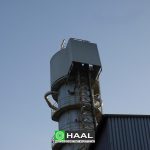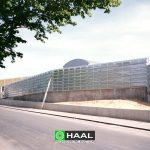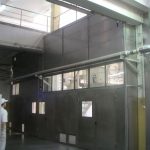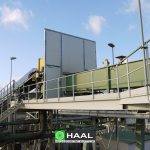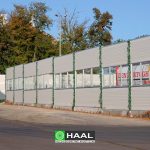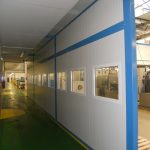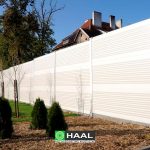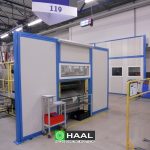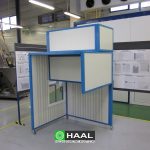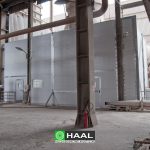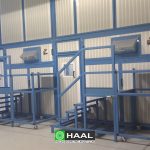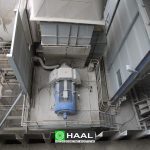Our company, HAAL Acoustic Enterprise, manufactures metal noise barriers (also known as acoustic barriers, noise fences, noise walls, sound barriers) that block and absorb the unwanted noise from industrial, traffic, commercial and residential sources. They can be designed for either indoor or outdoor usage.
Applications of our noise barriers:
- Industrial parks,
- Housing projects,
- Motorways, roads, parking lots,
- Commercial centres.
For over 25 years of our activity we completed hundreds of noise-reducing projects in many companies across and outside our country, where noise barriers were chosen as the optimum noise deadening solution. Our offer is aimed not only at the enterprises from all branches of industry, but also at the owners of estates, roads and other places that need noise-reduction solutions.
PURPOSES OF NOISE BARRIERS
- Sound screening of work stations, machines and devices - Barriers built for this purpose provide the reduction of noise level in the specific area of, for example, factory hall. Depending on the conditions in the hall, different types of barriers can be used:
- stationary - permanently attached to the ground,
- curtain - partially detachable, with sliding segments to optimally screen the desired side of noise source,
- mobile - entirely moveable, for example on wheels.
- Environmental sound screening - Barriers built for this purpose provide the noise level reduction in the specific area of the outdoor environment. In case of industrial plants, factories and other places, the noise barriers are generally situated next to the source of the noise or on the borders of the premises. In case of the traffic routes, for example roads, the barriers are situated beyond the clearance gauge. We are strongly focused on aesthetics of the noise barriers we design.
CHARACTERISTICS OF OUR NOISE BARRIERS
The structure of indoor and outdoor noise barriers is similar. Generally, every acoustic barrier consist of the sound-absorptive and insulating layer, the absorptive layer is directed towards the source of noise. In some cases, the barrier with absorptive layer on either side is used - for example, in factory halls, where there's the need not only to screen the workers directly from loud machines and devices, but also to reduce the level of the so-called acoustic background in the hall.
The efficiency of the noise barriers (primarily outdoor) is determined mainly by their linear dimensions, particularly the proportion between their height (or width) and the length of the sound wave that is being diffracted. If the dimensions of the barrier are smaller than the wavelength, the wave will evade the barrier and the sound acoustic pressure behind the barrier might even get higher. Therefore it is very important to determine the proper size of the noise barrier, so that the so-called acoustic shadow behind the screen will cover the area that needs to be protected from the noise.
Our first step in every new project is to prepare the Noise Survey. The main purpose of the survey is to define the most effective solution to reduce the noise of the given topic and to determine acoustic and mechanical parameters of it. Because we take the individual approach to every job throughout the whole project period, we can guarantee that our noise barriers will not only fulfill their basic noise-reduction function, but they will also be adapted as best as they can to every other technological and ergonomic requirement.
We can also manufacture the convex noise barriers, which have the additional ability to diffuse the sound.

